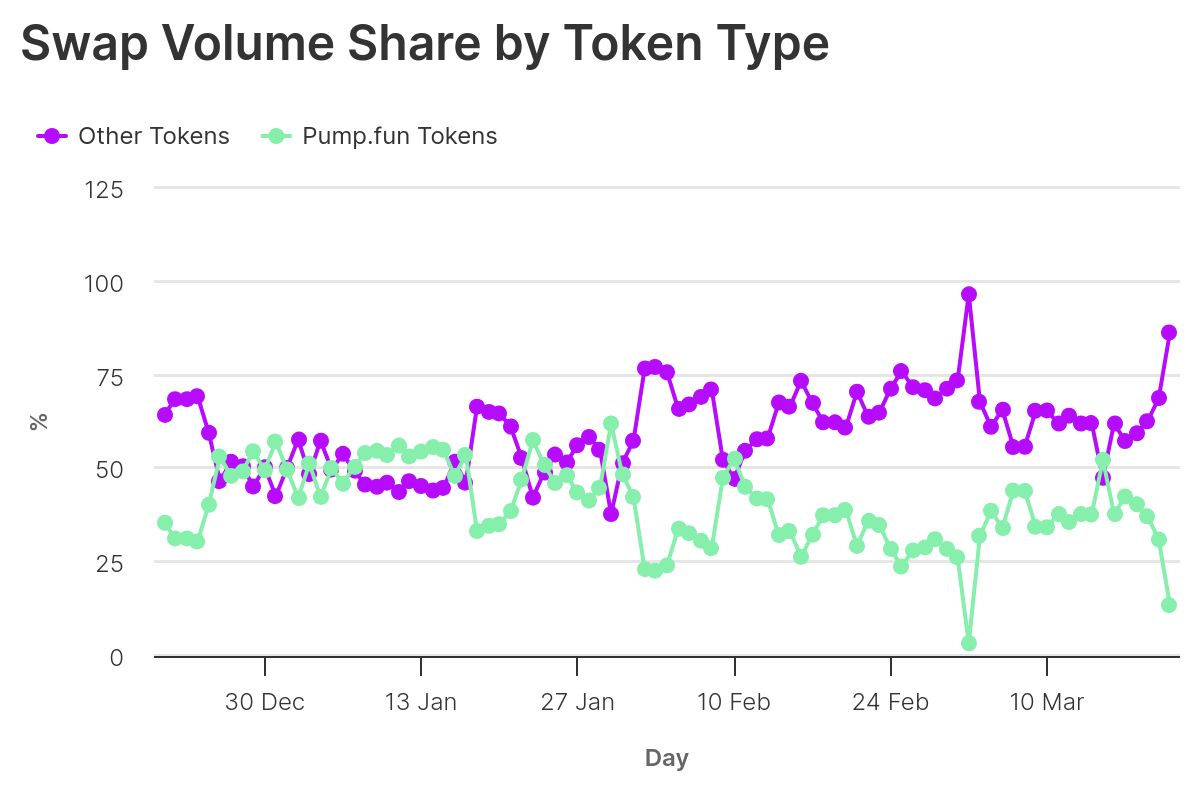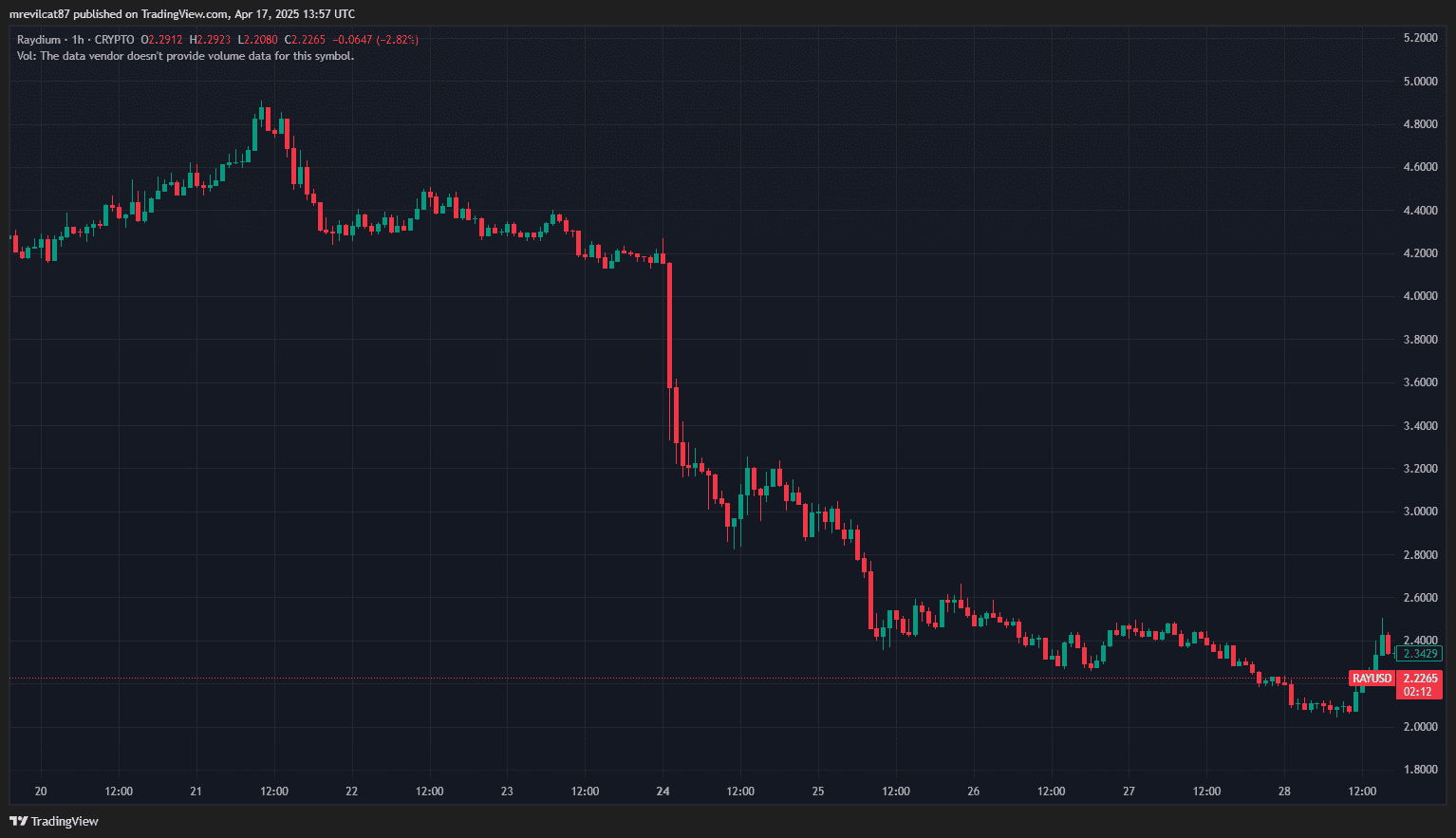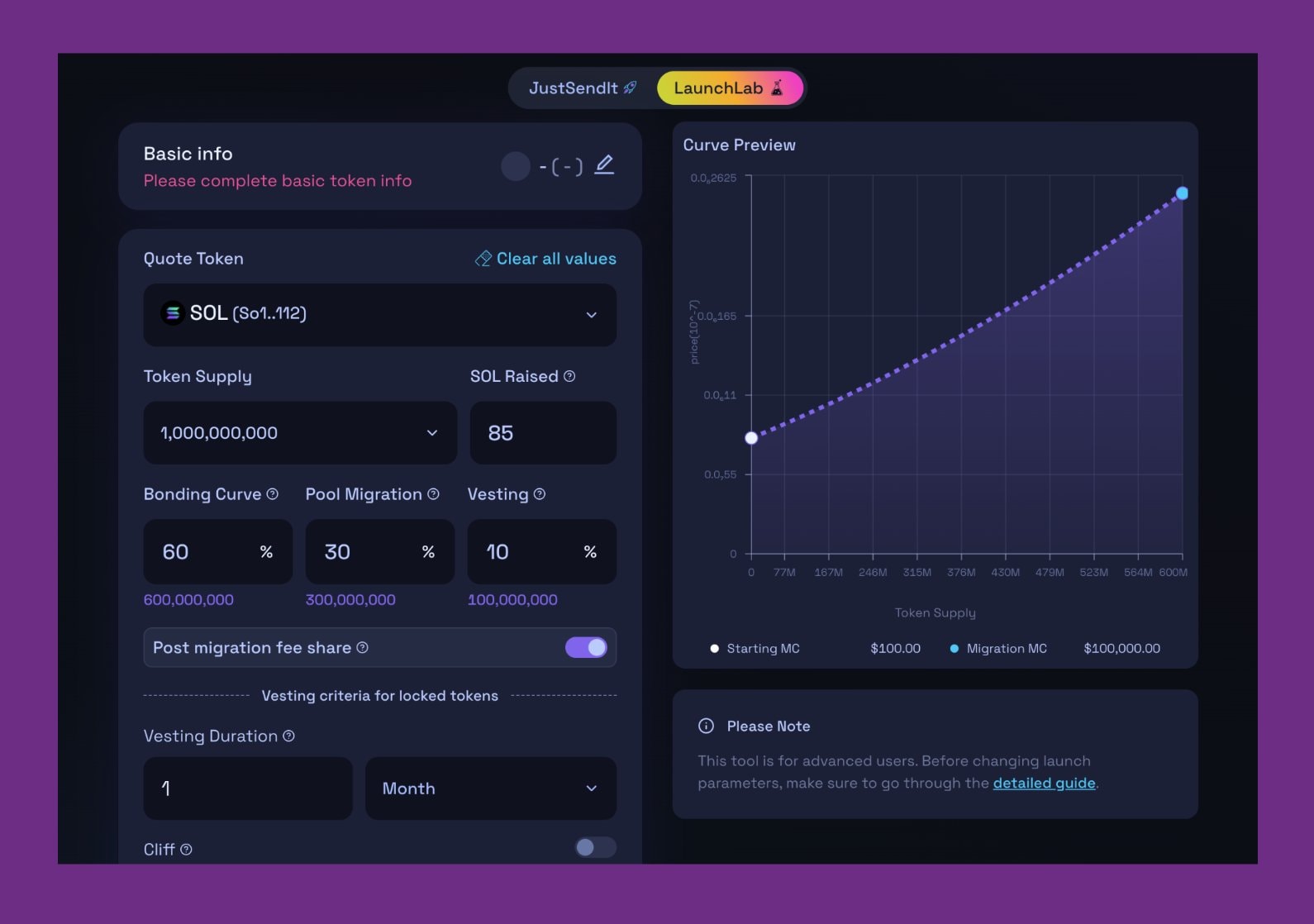On April 16, 2025, the decentralized exchange Raydium presented a new platform for launching meme coins LaunchLab. According to the developers, the project allows for the rapid creation of new tokens with deep customization capabilities.
Against the backdrop of LaunchLab launch, users started talking about a new round of competition in this direction. The platform should “impose the struggle” on the segment leader — pump.fun.
The Incrypted team studied the features and advantages of LaunchLab and analyzed potential changes in this asset class.
Big Boss
In early 2024, the pump.fun platform has become a truly viral tool for meme coins startups. Its main advantage is that creating a token takes minimal time and requires virtually no financial injection. Such mechanics suited both speculators and novice enthusiasts.
The model turned out to be quite simple. When a certain capitalization was reached for a token, a pool was automatically opened on Raydium. Users drove the tokens towards that goal, forming a spontaneous community around new ideas, often without a white paper, team, or roadmap. In this sense, pump.fun became the first massive “hype builder” on the Solana network, with Raydium as the infrastructural backbone.
However, the “facade” masked significant trading volumes:
- according to Flipsyde analytics, in January 2025, over 62% of Raydium’s trading volume came from pump.fun tokens;
- Raydium receives a standard 0.25% swap fee for each asset, as well as a one-time pool activation fee;
- tens of thousands of new tokens are launched on pump.fun every day.


The situation changed dramatically in February 2025, when information about the test pool amm.pump.fun appeared online. This indicated that pump.fun was building DEX infrastructure and preparing to launch its own exchange. For Raydium such turn of events threatened to lose not only traffic but also commission income.
Rumors about the new project from the pump.fun team alone led to the collapse of the Raydium token (RAY) by 30% in February this year.


A month later, a decentralized platform from the “meme coins giant” entered the market, named PumpSwap. It is based on the Solana network using the Constant Product AMM model. By the time the material was published, the trading volume on the platform exceeded $8.1 billion, according to Dune Analytics.
Under these conditions, Raydium had to look for a symmetrical response — and LaunchLab became it.
Bold Newcomer
LaunchLab was launched on April 16, 2025. The platform offers users and developers an “alternative way” of issuing meme coins, focusing on long-term models, transparency, and customization. If pump.fun is a “token creation cannon,” LaunchLab is closer to a builder with fine-tuning.
The main differences, according to Raydium’s documents:
- users can choose from linear, exponential and logarithmic curves of cost versus demand volume;
- in addition to Solana, users have access to Stablecoins and Liquid Stacking Protocol (LST) tokens;
- developers can independently customize commissions from transactions, forming tokenomics for their needs;
- the project can freeze liquidity for a set period of time, which reduces the risks of rug pull schemes and makes the launch more transparent.
As for the process of token creation, in addition to the standard mode with extensive LaunchLab settings, there is a JustSendIt option with instant issuance of meme coin. In this case, after reaching a capitalization of 85 SOL, the liquidity of the asset is automatically transferred to AMM Raydium.
In addition, the developers stated flexible token offering customization, sales volume tracking, delegation and rights management.


Creators receive 10% of trading fees and also participate in revenue sharing from the AMM pool. For tokens launched through the LaunchLab interface, a 100 basis point (1%) fee is charged. Of this amount, 50% goes to the so-called Community Pool for developers and traders, 25% goes to RAY token redemption, and 25% goes to infrastructure support.
In addition, participants have access to a referral program with 0.1% of the swap volume rewarded. LaunchLab also provides additional tools for token distribution and integration with the interface. According to the exchange representatives, this allows new assets to be visible in all terminals and applications from day one.
Fighting for Users?
Back in February 2025, the Raydium team stated that the development of pump.fun decentralized exchange would be a “strategic miscalculation”.
Thus, the actions of the two projects look less and less like a collaboration. The creation of pump.fun’s own AMM has deprived Raydium of the lion’s share of meme coins traffic, and LaunchLab is openly competing for the same users.
Raydium is betting that experienced teams and users will start leaving the competitor’s site, experts say. In their opinion, this move should be prompted by the fact that LaunchLab offers not just a token launch, but an infrastructure for scaling and growth.
At the same time, pump.fun maintains a strong position at the current stage due to:
- minimal entry threshold (cheap one-click token launch);
- a strong brand and a large community;
- an established and user-friendly way of issuing meme coins.
However, it’s not all smooth sailing here, either. According to Dune Analytics, in February 2025, monthly trading volume on the pump.fun platform fell 63% to $43.9 billion. The daily average, in turn, is down 94% from its peak in January. And the indicators continue to decline.


Decentralization or Fragmentation?
The situation with LaunchLab and pump.fun may be not just a competition, but a reflection of global processes in the Solana ecosystem. We are talking about decentralization of trading infrastructure and transition to modular designs, where projects form their own chains for launching and trading tokens.
If the platforms continue to develop in their niches, pump.fun may remain a kind of space for experimentation, and LaunchLab may remain an infrastructure for more mature teams. In such a case, we will probably be able to observe fragmentation of the token launching trend.
At the same time, the Raydium team does not hide the fact that it has created a direct competitor to the main meme coins startup platform. The developers intend to capture a significant share of this market and even broadcast statements of various experts about “possible change of the leader” in this sector, as in the case of the above publication. It was posted by one of the key members of the Raydium team under the nickname 0xINFRA.
The fate of the market will depend on several factors:
- who will offer more favorable terms for developers;
- how quickly real success stories will appear on LaunchLab;
- how well project developers will implement their marketing strategy;
- whether pump.fun will be able to actively develop AMM competitor Raydium.
At first glance, the LaunchLab and pump.fun story is just another round of competition in the meme coins sector. But in reality, it may reflect a much deeper shift: a shift from “quick launches” to managed and sustainable assets.
If pump.fun created a trend to democratize token issuance, Raydium LaunchLab is attempting to “refresh” the trend and, in parallel, reformat the meme coins launch market.